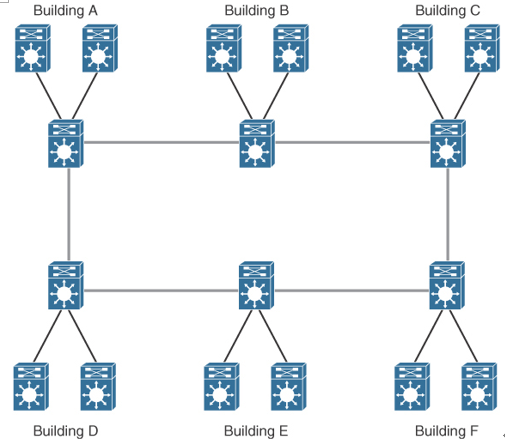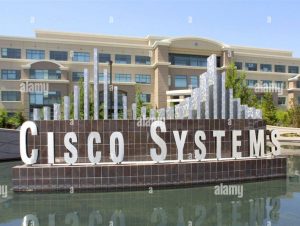Enterprise Campus LANs – Advanced Enterprise Campus Design
2 min read
A campus LAN connects two or more buildings within a local geographic area using a high-bandwidth LAN media backbone. Usually, the enterprise owns the medium (copper or fiber). High-speed switching devices minimize latency. In today’s networks, 10 Gigabit Ethernet or 40 Gigabit Ethernet campus backbones are the standard for new installations. In Figure 7-12, Layer 3 switches with fiber-optic media connect campus buildings.

Figure 7-12 Campus LAN
Ensure that you implement a hierarchical design on a campus LAN and assign network layer addressing to control broadcasts on the networks. Each building should have addressing assigned in such a way as to maximize address summarization. Apply contiguous subnets to buildings at the bit boundary to apply summarization and ease the design. Campus networks can support high-bandwidth applications such as video conferencing. Remember to use Layer 3 switches with high-switching capabilities in the campus backbone design. In smaller installations, it might be desirable to collapse the building-distribution component into the campus backbone. An increasingly viable alternative is to provide building access and distribution on a single device selected from among the smaller Layer 3 switches now available.
As a CCNP designer, you should think about interbuilding structure considerations. Modern applications, video requirements, and distance requirements drive the use of fiber technologies for interbuilding connectivity. These include the following:
- 10GBASE-SR: Multimode fiber for up to 400 meters (short range)
- 10GBASE-LR: Single-mode fiber for up to 10 kilometers (long range)
- 10GBASE-ER: Single-mode fiber for up to 80 kilometers (extended range)
As shown in the previous sections, each individual module has different requirements. The building access layer is the only layer that uses Layer 2 switching. Both the campus core and the server farm have requirements for high availability and high performance.
Table 7-7 shows network requirements for application types.
Table 7-7 Network Requirements for Application Types
| Specification | Building Access | Distribution Layer | Campus Core | Server Farm |
| Technology | Layer 2 and Layer 3 switches | Layer 3 switches | Layer 3 switches | Layer 3 switches |
| Scalability | High | Medium | Low | Medium |
| Availability | Medium | Medium | High | High |
| Performance | Medium | Medium | High | High |
| Cost per port | Low | Medium | High | High |
Small and Medium Campus Design Options
A medium-sized campus would have between 200 and 1000 end devices. Such a network consists of building access switches that connect to a pair of campus distribution switches, as shown in Figure 7-13.

Figure 7-13 Small and Medium Campus LANs
A small campus would have fewer than 200 end devices. Switches in a small campus might not require much scaling capability. A single distribution switch would connect campus building access switches.




